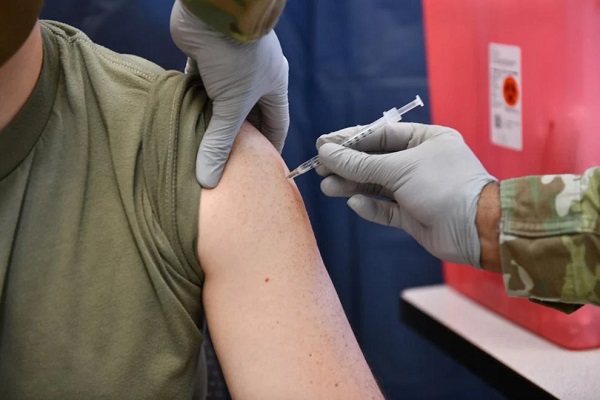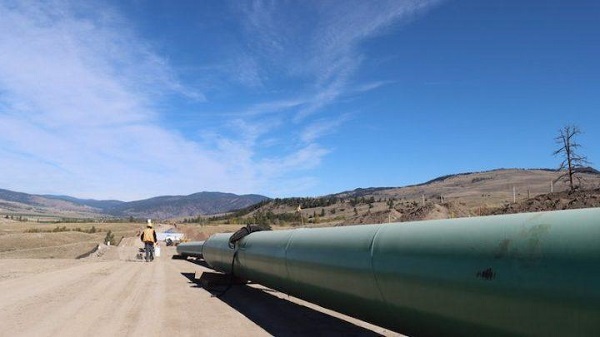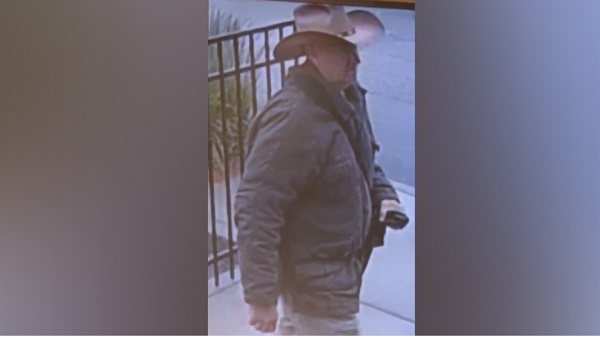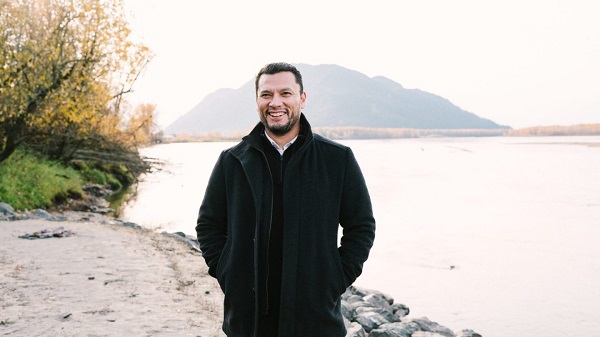Alberta
ASIRT rules police officer’s use of lethal force permissible in this case

From the Alberta Serious Incident Response Team (ASIRT)
Edmonton officer acted reasonably in fatal shooting
On March 9, 2017, the Alberta Serious Incident Response Team (ASIRT) was directed to investigate the circumstances surrounding an Edmonton Police Service (EPS) officer-involved shooting that occurred the same day that resulted in the death of a 55-year-old man.
Shortly before 1:30 p.m., multiple 911 calls were made regarding a possible impaired motorist driving a minivan on 149 Street that had entered onto the Whitemud Freeway. The make, model, and vehicle’s licence plate number were provided to police. Two independent callers to police both described the driver, who was the lone occupant of the van, indicating that he looked “drunk.” Police were advised that the van had earlier hit a snowbank and a curb, was being driven in and out of lanes, “swerving all over the road,” including down the middle of two lanes and had nearly collided with a vehicle. The van was reportedly “all over the road” and at one point, went off the roadway. As the van approached the 119 Street exit, it almost collided with another vehicle, and both callers advised that other vehicles were “swerving” to avoid the van. One of the callers advised police that the van was driving at speeds between 30 and 120 km/h. The driver took the freeway exit ramp southbound on 119 Street, followed by one of the callers.
As the driver went south on 119 Street, swerving along the way, he turned right at 23 Avenue to proceed westbound, driving close to and over the curb, and nearly colliding with concrete blocks on a small bridge over a ravine. It was reported that the van looked like it was about to crash. After turning onto Hodgson Way, driving over the curb along the way, the driver turned into a cul-de-sac, stopped in the middle of the road, then returned to Hodgson Way at a higher speed. The driver then turned into Holland Landing, at which point a marked EPS vehicle pulled up, so the caller who was following the van went on his way, leaving the driver to the police. He did not observe any interaction between police and the driver of the vehicle.
The lone EPS officer, in full uniform, had arrived on scene in a marked police SUV. He observed the van, matching the earlier provided description, coming directly towards him, driven by a large man, also matching the description provided. The van stopped and the officer pulled the front end of the police SUV up to the front end of the van, slightly to the driver’s side to block the vehicle.
The officer exited his vehicle and approached the van. As he did so, the man exited the van against the officer’s commands to remain in the vehicle. The officer noted signs of the man’s impairment including the smell of liquor, glazed eyes, difficulty focusing, and swaying from side to side. When questioned, the man said he had not been drinking, but slurred his words. The officer told the man he was under arrest for impaired driving, and ordered him to turn around and place his hands behind his back. The man asked, “what do you want me to do?”, and the command was repeated. When the officer tried to take control of the man’s arm, the man went to reach for something at his waist. The officer instructed the man to keep his hands visible, and stepped back to call for assistance. This call took place approximately 50 seconds after the initial traffic stop.
The officer again instructed the man to show his hands. At this point, the man produced a hunting knife in his right hand. The man was described as raising the knife in front of his body and pointing it at the officer. The officer attempted to gain distance but the man followed the officer. The officer slipped on the roadway, covered in fresh snow, and fell to his back. As he tried to get up, the man fell on top of him, still holding the knife in his right hand. The officer yelled several commands for the man to “stop” and “get back”, and tried to push him away. The officer kicked the man away to gain space, and continued to shout commands to drop the weapon and “get back”. When the man again advanced, still holding the knife, the officer discharged four rounds from his service pistol from his position on the ground. He saw the man fall away to the left. The officer rose to his feet, and called in “shots fired” stating “he came at me with a knife”. This second call was approximately 20 seconds after the first call for assistance.
The situation between the officer and the man had deteriorated extremely quickly. The time between when the officer indicated that he was “off” with the subject, meaning he was going to go deal with him, and the time that he reported shots had been fired was one minute, 14 seconds.
The knife was still in the right hand of the man, who had fallen on the snow-covered roadway. The officer holstered his firearm, moved the knife away from the man and attempted CPR until other officers arrived on scene.
No civilian witnesses saw the actual shooting, but several were present and made observations immediately after the shots were fired. Upon hearing the shots, two witnesses exited their residence. One of these witnesses reported that just prior to hearing the shots fired, he heard yelling but could not hear what was being said. The officer was described as breathing heavily, had snow on his face and in his hair, and was described as looking like he had been in “a battle”. A photograph that was taken at the time by one of the witnesses showed snow on the back of the officer’s patrol jacket and pants. Another civilian witness reported he heard shots, looked out his front window and saw a man lying on the street and a uniformed police officer standing within a foot of the person. He advised investigators that he watched the police officer holster his sidearm, walk towards the man, remove a knife from the man’s hand to move it approximately three feet from the body towards the sidewalk.
The knife recovered from the scene matched the branded sheath found attached to the man’s belt. A DNA profile from the handle of the knife matched the DNA profile of the man. The man was also known to carry a hunting knife. The man was 55 years of age at the time of his death. He held dual Russian and Canadian citizenship. He had been an Edmonton resident for years and operated his own business and worked as a sub-contractor. He was not working on March 9, 2017 because of inclement weather. He has no prior criminal record. By all accounts, the man’s conduct with the officer on March 9, 2017 was out of character.
Upon autopsy, the man’s blood alcohol level was determined to be at least three and a half times over the legal limit of 80 mg/%.
As established by the high blood alcohol results, the egregious driving pattern observed by civilians, the observations of the civilian witnesses and the officer as to the physical signs of impairment, the man was grossly intoxicated at the time of his death. This level of intoxication would not only have resulted in physical signs of impairment but would also have compromised thought processes, judgment, perception and a person’s intellectual and emotional functioning.
Under the Criminal Code, a police officer is authorized to use as much force as is reasonably necessary to perform his or her lawful duties. This can include force intended, or likely to cause, death or grievous bodily harm if the officer reasonably believes that such force is necessary to defend themselves or someone under their protection from imminent death or grievous bodily harm. Further, any person, including a police officer, is entitled to use reasonable force in self-defence or in defence of another person. An assessment of the reasonableness of force will consider different factors, including the use (or threatened use) of a weapon, the imminence of the threat, other options available and the nature of the force (or threat of force) itself.
The officer had more than reasonable grounds to believe that the man was operating a motor vehicle while his ability to do so was impaired by alcohol. He was lawfully placed and acting in the lawful execution of his duty, and had both the grounds and the authority to place the man under arrest.
Based on the available evidence as a whole, it is very clear that the conduct of the man presented a very real risk of death to the officer. The situation escalated at the point when the man twisted away and produced the knife. In response to these actions, the officer attempted to reposition himself to reduce the threat, and had issued numerous commands to the man to stop and to drop the weapon. The man was non-compliant with those commands, and initiated a physical confrontation with the officer, despite the officer’s attempts to create distance, and did so while armed with a knife. In the circumstances, the officer’s conduct was clearly objectively and subjectively reasonable and necessary. When assessing the danger posed to the officer by the man, and factors such as the presence of a weapon, the immediacy of the threat to the officer, and the lack of time, distance or the availability of other alternatives, it is evident that the action taken by the subject officer, while tragic, was reasonable in the circumstances. As such, the subject officer’s use of lethal force, having regard to the protections provided in the Criminal Code, was permissible and did not constitute a criminal offence.
ASIRT’s mandate is to effectively, independently, and objectively investigate incidents involving Alberta’s police that have resulted in serious injury or death to any person. This mandate includes incidents involving discharge of a firearm that would likely have resulted in serious injury or death had the person been struck.
Alberta
Alberta announces citizens will have to pay for their COVID shots

From LifeSite News
The government said that it has decided to stop ‘waste’ by not making the shots free starting this fall.
Beginning this fall, COVID shots in the province will have to be pre-ordered at the full price, about $110, to receive them. (This will roll out in four ‘phases’. In the first phases COVID shots will still be free for those with pre-existing medical conditions, people on social programs, and seniors.)
The UCP government in a press release late last week noted due to new “federal COVID-19 vaccine procurement” rules, which place provinces and territories as being responsible for purchasing the jabs for residents, it has decided to stop “waste” by not making the jab free anymore.
“Now that Alberta’s government is responsible for procuring vaccines, it’s important to better determine how many vaccines are needed to support efforts to minimize waste and control costs,” the government stated.
“This new approach will ensure Alberta’s government is able to better determine its overall COVID-19 vaccine needs in the coming years, preventing significant waste.”
The New Democratic Party (NDP) took issue with the move to stop giving out the COVID shots for free, claiming it was “cruel” and would place a “financial burden” on people wanting the shots.
NDP health critic Sarah Hoffman claimed the move by the UCP is health “privatization” and the government should promote the abortion-tainted shots instead.
The UCP said that in 2023-2024, about 54 percent of the COVID shots were wasted, with Health Minister Adriana LaGrange saying, “In previous years, we’ve seen significant vaccine wastage.”
“By shifting to a targeted approach and introducing pre-ordering, we aim to better align supply with demand – ensuring we remain fiscally responsible while continuing to protect those at highest risk,” she said.
The UCP government said that the COVID shots for the fall will be rolled out in four phases, with those deemed “high risk” getting it for free until then. However, residents who want the shots this fall “will be required to pay the full cost of the vaccine, the government says.”
The jabs will only be available through public health clinics, with pharmacies no longer giving them out.
The UCP also noted that is change in policy comes as a result of the Federal Drug Administration in the United States recommending the jabs be stopped for young children and pregnant women.
The opposite happened in Canada, with the nation’s National Advisory Committee on Immunization (NACI) continuing to say that pregnant women should still regularly get COVID shots as part of their regular vaccine schedule.
The change in COVID jab policy is no surprise given Smith’s opposition to mandatory shots.
As reported by LifeSiteNews, early this year, Smith’s UCP government said it would consider halting COVID vaccines for healthy children.
Smith’s reasoning was in response to the Alberta COVID-19 Pandemic Data Review Task Force’s “COVID Pandemic Response” 269-page final report. The report was commissioned by Smith last year, giving the task force a sweeping mandate to investigate her predecessor’s COVID-era mandates and policies.
The task force’s final report recommended halting “the use of COVID-19 vaccines without full disclosure of their potential risks” as well as outright ending their use “for healthy children and teenagers as other jurisdictions have done,” mentioning countries like “Denmark, Sweden, Norway, Finland, and the U.K.”
The mRNA shots have also been linked to a multitude of negative and often severe side effects in children and all have connections to cell lines derived from aborted babies.
Many Canadian doctors who spoke out against COVID mandates and the experimental mRNA injections were censured by their medical boards.
LifeSiteNews has published an extensive amount of research on the dangers of the experimental COVID mRNA jabs that include heart damage and blood clots.
Alberta
Alberta’s grand bargain with Canada includes a new pipeline to Prince Rupert

From Resource Now
Alberta renews call for West Coast oil pipeline amid shifting federal, geopolitical dynamics.
Just six months ago, talk of resurrecting some version of the Northern Gateway pipeline would have been unthinkable. But with the election of Donald Trump in the U.S. and Mark Carney in Canada, it’s now thinkable.
In fact, Alberta Premier Danielle Smith seems to be making Northern Gateway 2.0 a top priority and a condition for Alberta staying within the Canadian confederation and supporting Mark Carney’s vision of making Canada an Energy superpower. Thanks to Donald Trump threatening Canadian sovereignty and its economy, there has been a noticeable zeitgeist shift in Canada. There is growing support for the idea of leveraging Canada’s natural resources and diversifying export markets to make it less vulnerable to an unpredictable southern neighbour.
“I think the world has changed dramatically since Donald Trump got elected in November,” Smith said at a keynote address Wednesday at the Global Energy Show Canada in Calgary. “I think that’s changed the national conversation.” Smith said she has been encouraged by the tack Carney has taken since being elected Prime Minister, and hopes to see real action from Ottawa in the coming months to address what Smith said is serious encumbrances to Alberta’s oil sector, including Bill C-69, an oil and gas emissions cap and a West Coast tanker oil ban. “I’m going to give him some time to work with us and I’m going to be optimistic,” Smith said. Removing the West Coast moratorium on oil tankers would be the first step needed to building a new oil pipeline line from Alberta to Prince Rupert. “We cannot build a pipeline to the west coast if there is a tanker ban,” Smith said. The next step would be getting First Nations on board. “Indigenous peoples have been shut out of the energy economy for generations, and we are now putting them at the heart of it,” Smith said.
Alberta currently produces about 4.3 million barrels of oil per day. Had the Northern Gateway, Keystone XL and Energy East pipelines been built, Alberta could now be producing and exporting an additional 2.5 million barrels of oil per day. The original Northern Gateway Pipeline — killed outright by the Justin Trudeau government — would have terminated in Kitimat. Smith is now talking about a pipeline that would terminate in Prince Rupert. This may obviate some of the concerns that Kitimat posed with oil tankers negotiating Douglas Channel, and their potential impacts on the marine environment.
One of the biggest hurdles to a pipeline to Prince Rupert may be B.C. Premier David Eby. The B.C. NDP government has a history of opposing oil pipelines with tooth and nail. Asked in a fireside chat by Peter Mansbridge how she would get around the B.C. problem, Smith confidently said: “I’ll convince David Eby.”
“I’m sensitive to the issues that were raised before,” she added. One of those concerns was emissions. But the Alberta government and oil industry has struck a grand bargain with Ottawa: pipelines for emissions abatement through carbon capture and storage.
The industry and government propose multi-billion investments in CCUS. The Pathways Alliance project alone represents an investment of $10 to $20 billion. Smith noted that there is no economic value in pumping CO2 underground. It only becomes economically viable if the tradeoff is greater production and export capacity for Alberta oil. “If you couple it with a million-barrel-per-day pipeline, well that allows you $20 billion worth of revenue year after year,” she said. “All of a sudden a $20 billion cost to have to decarbonize, it looks a lot more attractive when you have a new source of revenue.” When asked about the Prince Rupert pipeline proposal, Eby has responded that there is currently no proponent, and that it is therefore a bridge to cross when there is actually a proposal. “I think what I’ve heard Premier Eby say is that there is no project and no proponent,” Smith said. “Well, that’s my job. There will be soon. “We’re working very hard on being able to get industry players to realize this time may be different.” “We’re working on getting a proponent and route.”
At a number of sessions during the conference, Mansbridge has repeatedly asked speakers about the Alberta secession movement, and whether it might scare off investment capital. Alberta has been using the threat of secession as a threat if Ottawa does not address some of the province’s long-standing grievances. Smith said she hopes Carney takes it seriously. “I hope the prime minister doesn’t want to test it,” Smith said during a scrum with reporters. “I take it seriously. I have never seen separatist sentiment be as high as it is now. “I’ve also seen it dissipate when Ottawa addresses the concerns Alberta has.” She added that, if Carney wants a true nation-building project to fast-track, she can’t think of a better one than a new West Coast pipeline. “I can’t imagine that there will be another project on the national list that will generate as much revenue, as much GDP, as many high paying jobs as a bitumen pipeline to the coast.”
-

 Business1 day ago
Business1 day agoEU investigates major pornographic site over failure to protect children
-

 Canadian Energy Centre1 day ago
Canadian Energy Centre1 day agoCross-Canada economic benefits of the proposed Northern Gateway Pipeline project
-

 Economy1 day ago
Economy1 day agoCarney’s Promise of Expediting Resource Projects Feels Like a Modern Version of the Wicked Stepmother from Disney’s Cinderella
-

 Alberta1 day ago
Alberta1 day agoAlbertans need clarity on prime minister’s incoherent energy policy
-

 conflict8 hours ago
conflict8 hours ago“Evacuate”: Netanyahu Warns Tehran as Israel Expands Strikes on Iran’s Military Command
-

 Energy7 hours ago
Energy7 hours agoCould the G7 Summit in Alberta be a historic moment for Canadian energy?
-

 Crime1 day ago
Crime1 day agoManhunt on for suspect in shooting deaths of Minnesota House speaker, husband
-

 Business22 hours ago
Business22 hours agoCarney’s European pivot could quietly reshape Canada’s sovereignty






